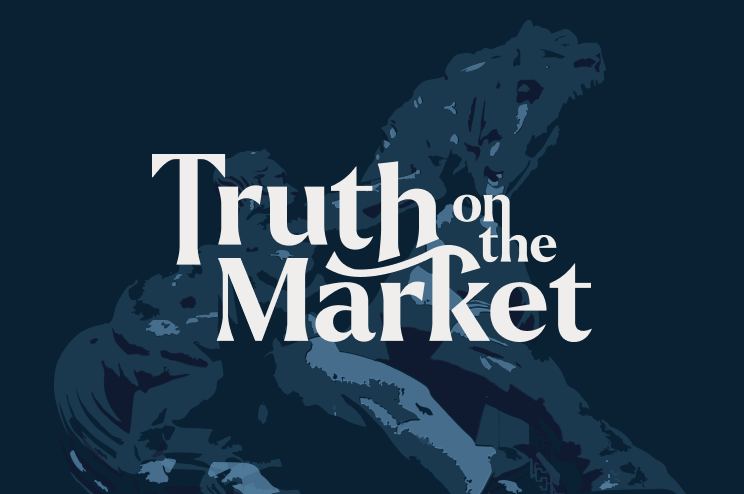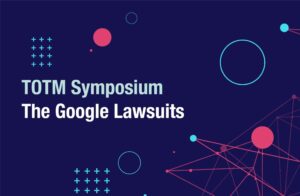Showing results for: “digital markets act”
Some Links …
There was a lot of backdating … yawn… oh, and Brett Favre is coming back The WSJ editorial page thinks the liberal boycotts of Whole Foods in response to CEO John Mackey’s op-ed on health care reform won’t have any real effects because because “real protest would require the store’s hyperprogressive customers to withdraw forever ... Some Links …
The New Issue of Antitrust Source
Is available here. In this issue Chris Sagers considers the future of Section 1 in light of the Supreme Court’s possible action in American Needle. Continuing our focus on China, this issue features an article by Nate Bush that examines merger enforcement activity under that country’s year-old Antimonopoly Law. Still on mergers, but on the ... The New Issue of Antitrust Source
Questioning the UK Competition Commission Ombudsman Plan
In April 2008, the UK Competition Commission issued its Final Report culminating from its grocery sector inquiry. Along with supermarket concentration, the concern that emerges out of that Report is that supermarkets will use their power to negotiate sharp deals with suppliers. For example: In emails from store buyers seized during its investigation, the Commission ... Questioning the UK Competition Commission Ombudsman Plan
EU Intel Fines Attract Rebuke
I’ve criticized the European Commission’s antitrust attack against Intel here and the resulting $1.44 billion fine. Now the EU is drawing fire for allegedly burying testimony, or at least failing to record it in a satisfactory manner, from Dell that it chose Intel’s chips not because of the coercive force of any of Intel’s rebates ... EU Intel Fines Attract Rebuke
Antitrust Anachronism? Randy Picker on the Microsoft-Yahoo Search Deal
I recently commented on Gordon Crovitz’s WSJ column on the Microsoft-Yahoo deal arguing that antitrust was simply too cumbersome to deal competition issues in dynamic markets like search. A short version of my take was that these concerns are often overstated in the areas of cartels and even sometimes in merger enforcement — but have ... Antitrust Anachronism? Randy Picker on the Microsoft-Yahoo Search Deal
Trends in Protectionism
Here’s a troubling paragraph from Chad Bown’s WSJ op-ed: The count of newly imposed protectionist policies like antidumping duties and other “safeguard” measures increased by 31% in the first half of 2009 relative to the same period one year ago, which itself is not an alarming number. But many governments take more than a year ... Trends in Protectionism
Antitrust, Obsolescence and the "New Economy" (Again)
Gordon Crovitz (WSJ) plays the new economy card on antitrust. Its a familiar wrap for those in the antitrust community that hit its peak in the original Microsoft days with virtually every competition policy scholar and commentator chiming in with an opinion about whether the internet and network effects and so forth rendered antitrust obsolete. ... Antitrust, Obsolescence and the "New Economy" (Again)
FTC on the CFPA
Commissioners Rosch and Kovacic of the Federal Trade Commission come out against the proposed CFPA. Both emphasize the risk of shifting consumer protection authority away from an agency with substantial expertise in the area (including the Bureau of Economics which has an excellent record of reports and publications in this area) to an unproven agency. ... FTC on the CFPA
Moneyball, GMU and the Future of Law and Economics
My colleague Ilya Somin insightfully defends against allegations of the death of Moneyball in baseball and legal academia — largely making the point that larger institutions with larger payrolls imitating the successful elements of the strategy. There is more there, so go read the whole thing as well as an interesting comment thread. Ilya points ... Moneyball, GMU and the Future of Law and Economics
Chicago, Neo-Chicago and Chicago Squared: A Comment from David Evans and Jorge Padilla
In a recent post, Josh jokingly offered a mathematical “proof” to demonstrate that the Neo-Chicago approach to antitrust was simply an extension of the basic Chicago School approach: Dan identifies the “Neo-Chicago School”, a term coined by David Evans and Jorge Padilla, as the optimal “third way.” Basically, the Neo-Chicago school is the combination of ... Chicago, Neo-Chicago and Chicago Squared: A Comment from David Evans and Jorge Padilla
EU Likely to Require A Browser Ballot Screen for Windows 7 in Europe
PLEASE READ THIS NOTICE BEFORE PROCEEDING: TOTM readers are encouraged at this point to pick among the following antitrust blogs for content before reading this post: Antitrust Review Antitrust & Competition Policy Antitrust Hotch Potch Global Competition Policy OK. I thought that woud be funnier than it was. Moving on. It looks like the old/new ... EU Likely to Require A Browser Ballot Screen for Windows 7 in Europe
Scholarship Links
Kobayashi and Ribstein on jurisdictional competition in LLCs Bainbridge on Shareholder Activism in the Obama Administration Co-blogger Thom Lambert’s review of Ribstein and O’Hara’s The Law Market Peter Leeson makes the case for bringing back the third cheer for capitalism Bill Page reviewing my own review (and Dan Crane’s) of Bob Pitofsky’s How the Chicago ... Scholarship Links





